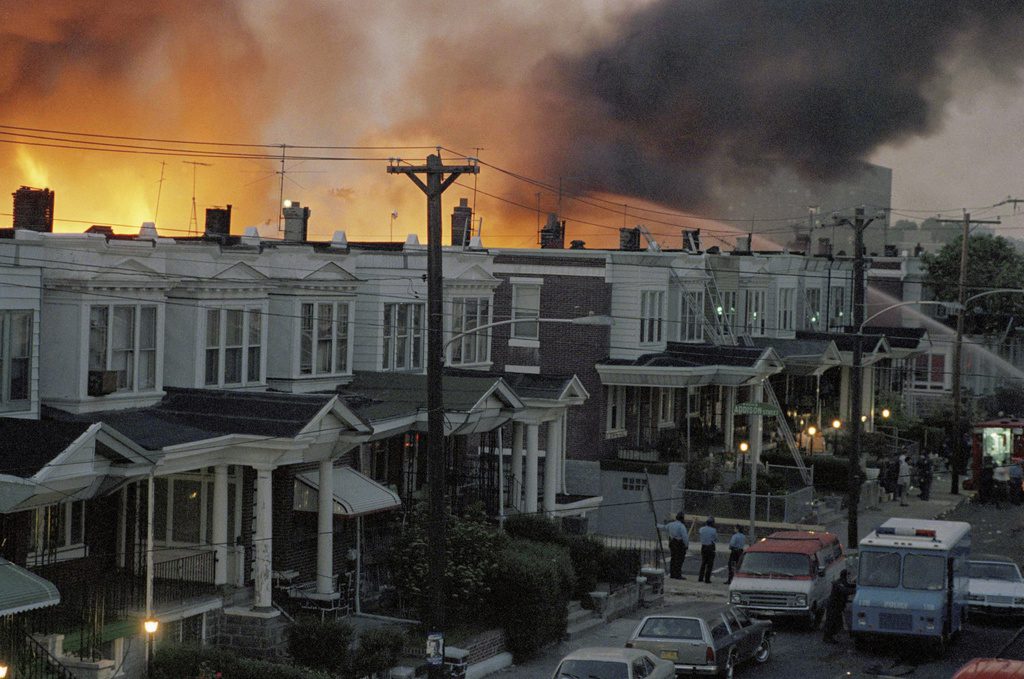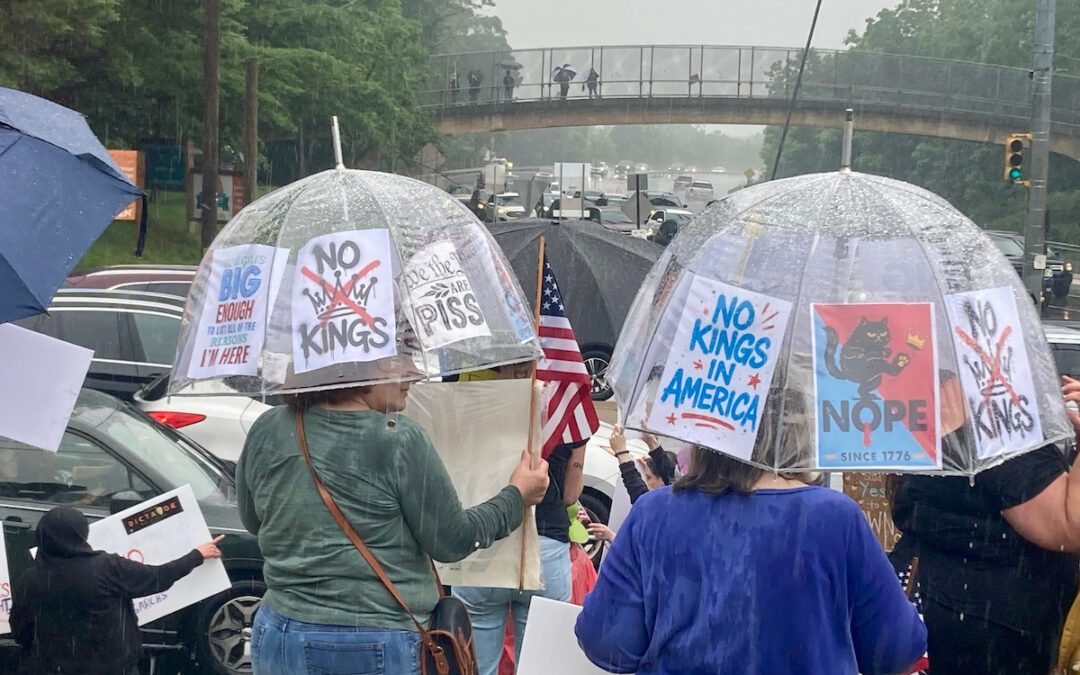
FILE - In May of 1985, scores of row houses burn in a fire in the West Philadelphia neighborhood. Police dropped a bomb on the militant group MOVE's home, May 13, 1985, in an attempt to arrest members, leading to the burning of scores of homes in the neighborhood. (AP Photo, File)
PHILADELPHIA (AP) — Additional human remains from a 1985 police bombing on the headquarters of a Black liberation group in Philadelphia have been found at the University of Pennsylvania.
The remains are believed to be those of 12-year-old Delisha Africa, one of five children and six adults killed when police bombed the MOVE organization’s headquarters, causing a fire that spread to dozens of row homes.
The remains were discovered during a comprehensive inventory that the Penn Museum conducted to prepare thousands of artifacts, some dating back more than a century, to be moved into upgraded storage facilities.
In 2021, university officials acknowledged that the school had retained bones from at least one bombing victim after helping with the forensic identification process in the wake of the bombing. A short time later, the city notified family members that there was a box of remains at the medical examiner’s office that had been kept after the autopsies were completed.
The museum said it’s not known how the remains found this week were separated from the rest, and it immediately notified the child’s family upon the discovery.
“We are committed to full transparency with respect to any new evidence that may emerge,” Penn Museum said in a statement on its website. “Confronting our institutional history requires ever-evolving examination of how we can uphold museum practices to the highest ethical standards. Centering human dignity and the wishes of descendant communities govern the current treatment of human remains in the Penn Museum’s care.”
MOVE members, led by founder John Africa, practiced a lifestyle that shunned modern conveniences, preached equal rights for animals and rejected government authority. The group clashed with police and many of their practices drew complaints from neighbors.
Police seeking to oust members from their headquarters used a helicopter to drop a bomb on the house on May 13, 1985. More than 60 homes in the neighborhood burned to the ground as emergency personnel were told to stand down.
A 1986 commission report called the decision to bomb an occupied row house “unconscionable.” MOVE survivors were awarded a $1.5 million judgment in a 1996 lawsuit.

How Steelton-Highspire’s clean energy push saved enough to fund a teacher — and then some
A struggling steel town has been transformed into a model for clean energy and community resilience, thanks to the Steelton-Highspire school...

Talks in Pennsylvania are at crunch time over a budget, legalizing marijuana and taxing skill games
Pennsylvania Gov. Josh Shapiro and state lawmakers are getting down to crunch time, with big questions still outstanding about how to balance the...

UPMC Memorial Hospital names intensive care unit in honor of heroic Officer Andrew Duarte
Officials, law enforcement and the parents of fallen West York Police Officer Andrew Duarte gathered at UPMC Memorial Hospital on Friday, June 13,...

Quakertown GOP said local ‘No Kings’ protesters would be paid $40. But is there evidence?
A Bucks County Republican club claimed that participants in a "No Kings" protest this past weekend would be paid. An administrator of the Quakertown...

Pennsylvania lawmaker wants to designate Sept. 12 as annual ‘day of the Bible’
Pennsylvania lawmakers once courted controversy by declaring 2012 the “year of the Bible.” Now, one Keystone State legislator wants to honor the...




